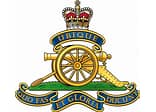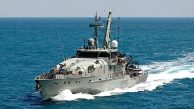
Australian Artillery: A History of Service and Evolution
ED: From my inbox – thanks to Troy Walsh RAA. Please remember everyone is welcome to contribute articles.
The artillery has played a pivotal role in Australian military history, with its origins tracing back to the colonial era. Over time, the Royal Australian Artillery (RAA) has grown into a versatile and essential component of the Australian Defence Force (ADF), providing key offensive support and ensuring battlefield dominance through indirect firepower, target acquisition, and air defence.
Artillery in the First World War
The First World War marked a significant expansion of Australia’s artillery capabilities. Sixty field batteries, twenty howitzer batteries, and two siege batteries were raised, alongside heavy and medium trench mortar units. These artillery formations were vital to the success of Australian infantry operations on the Western Front, providing long-range fire support, destroying enemy fortifications, and coordinating with infantry and armour to eliminate resistance.
The Royal Regiment of Australian Artillery
On 19 September 1962, a key moment in the history of the Australian Artillery occurred. Queen Elizabeth II granted the RAA the official title of “The Royal Regiment of Australian Artillery,” reflecting its stature and importance within the Commonwealth of Nations’ military forces. The regiment remains the only Commonwealth artillery regiment to have been presented with the Queen’s Banner, a prestigious honour originally presented on 1 August 1971, in honour of the regiment’s centenary. This replaced the King’s Banner, which had been presented by Lord Northcote, Governor General of Australia, in November 1904 in recognition of the RAA’s service in South Africa during the Boer War.
Artillery in the Second World War
During the Second World War, the RAA underwent massive expansion, with over 70 regiments of field, medium, anti-tank, and survey artillery raised, as well as over 200 anti-aircraft and coastal artillery batteries. Many of these units saw action in critical theatres such as the Middle East, Malaya, and the Southwest Pacific. However, the war also witnessed significant losses, with several artillery units captured by the Japanese in Singapore, Ambon, Timor, and New Britain, particularly those serving with the ill-fated 8th Division.
Post-War Developments
Following the war, Australia’s permanent artillery was a relatively modest force until the establishment of the Australian Regular Army in 1947. Prior to this, the artillery had been militia-based, with only a few permanent units such as ‘A’ Field Battery, which traces its lineage back to the New South Wales Artillery. By 1962, heavy coastal artillery, once stationed at strategic points around Australia’s coastline, was progressively phased out.
As warfare evolved, so too did the organisation of the RAA. In January 2011, the regiments and batteries underwent a significant reorganisation, with traditional terms such as “field” and “medium” being removed from their titles. Today, the Royal Regiment of Australian Artillery continues to serve as a crucial component of the ADF’s combined arms approach, supporting operations with its sophisticated indirect fire capabilities, including long-range weapons designed to inflict casualties, destroy enemy equipment, and provide essential support to infantry and armoured units.
The School of Artillery
In 1998, the present School of Artillery was completed in Puckapunyal, Victoria, providing modern training facilities and acting as the heart of artillery education within the ADF. Co-located with the Australian Army’s Headquarters Combined Arms Training Centre, the School is supported by the 53rd Battery, Royal Australian Artillery, ensuring that Australia’s gunners receive the best training in the latest techniques and equipment.
Looking Forward
The Royal Regiment of Australian Artillery continues to play a key role in Australia’s defence strategy. Its mission is to maximise the combat power of the Australian Defence Forces through the coordination of offensive support, the provision of indirect firepower, surveillance, target acquisition, and ground-based air defence. By doing so, the regiment remains a vital part of Australia’s military capabilities, ready to defend the nation and support its allies in future conflicts.




